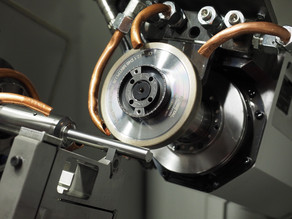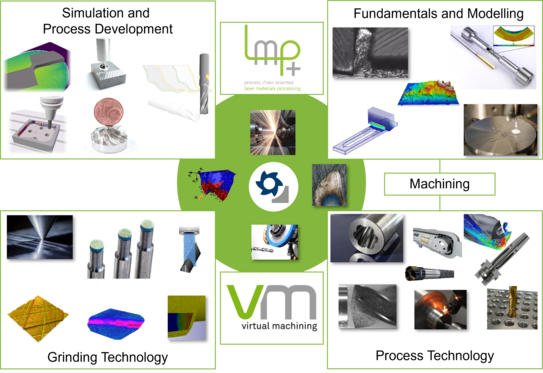Research
In its research, the ISF deals with geometrically determined and undetermined cutting processes in the micro and macro range for almost all classes of materials, as well as with the development of models and simulations based on them for these processes. The work takes place in the three research divisions of the institute. The machining division, with 16 employees, currently deals with all processes of geometrically determined cutting edges. In the division of grinding technology (eight employees), the processes of the geometrically undefined cutting edge are the focus of the work. The simulation and process development division with five scientific staff members deals with the modelling and simulation of complete processes, with complex milling and micro-machining.
The ISF is comprised of the research divisions Machining Technology (inlcuding the key areas Fundamentals and Modelling and Process Technology), Grinding Technology and Simulation and Process Design. These divisions are supported by employees of the extensively equipped measuring laboratories , by sample preparation, and with regard to the business managing of research projects by an internal accounting and purchasing department.
Since 2022, the ISF has been assigned the Junior Professorship Process Chain Oriented Laser Material Processing headed by Jun.-Prof. Dr.-Ing. Peer Woizeschke and for several years there has been close cooperation with the Working Group Virtual Machining at LS 14 of the Faculty of Computer Science headed by Prof. Dr.-Ing. Dipl.-Inform. Petra Wiederkehr, who is co-opted in the Faculty of Mechanical Engineering.




![[Translate to English:] [Translate to English:]](/storages/isf-mb/_processed_/0/3/csm_Finishband_c137def41f.jpg)
